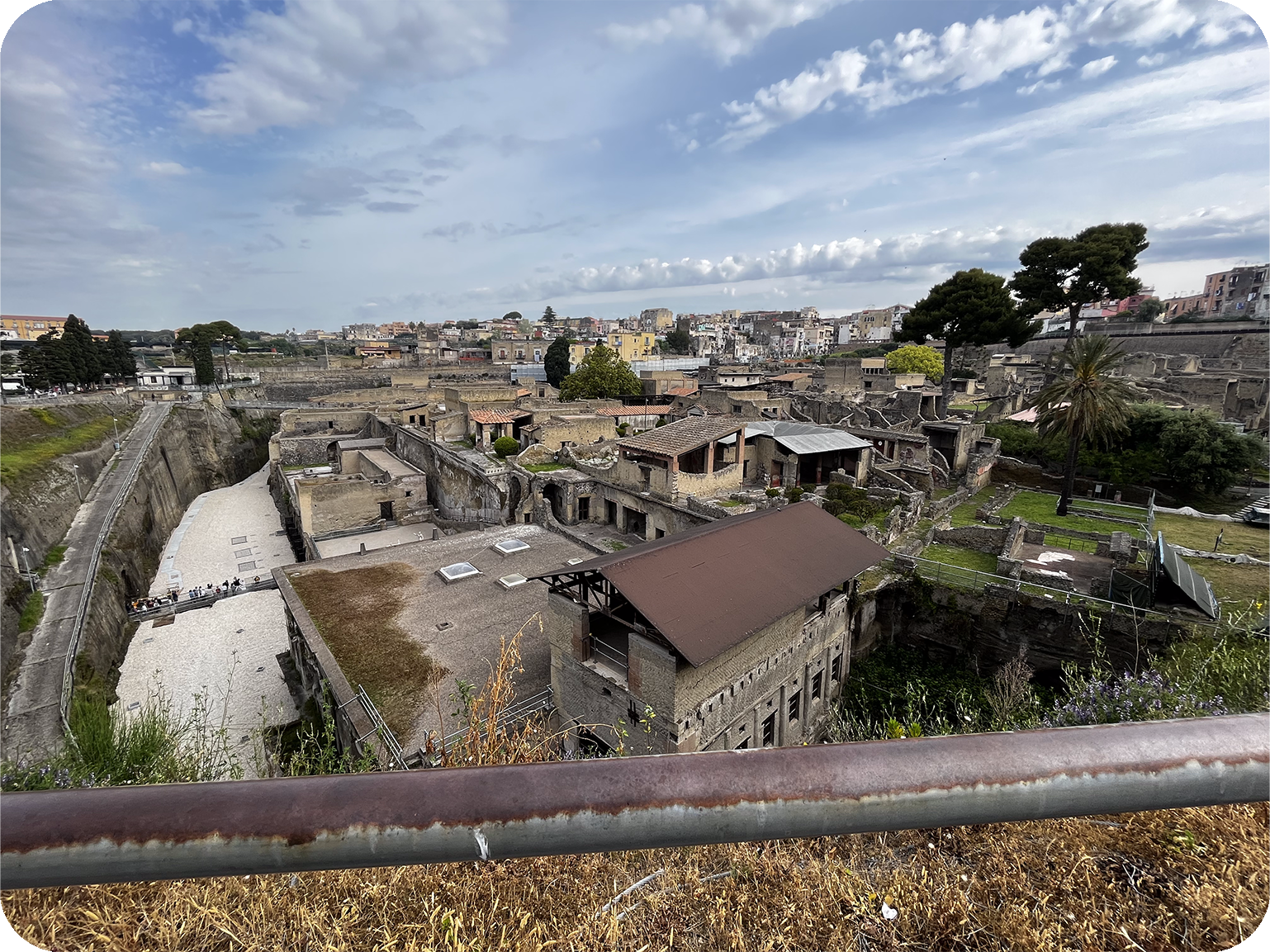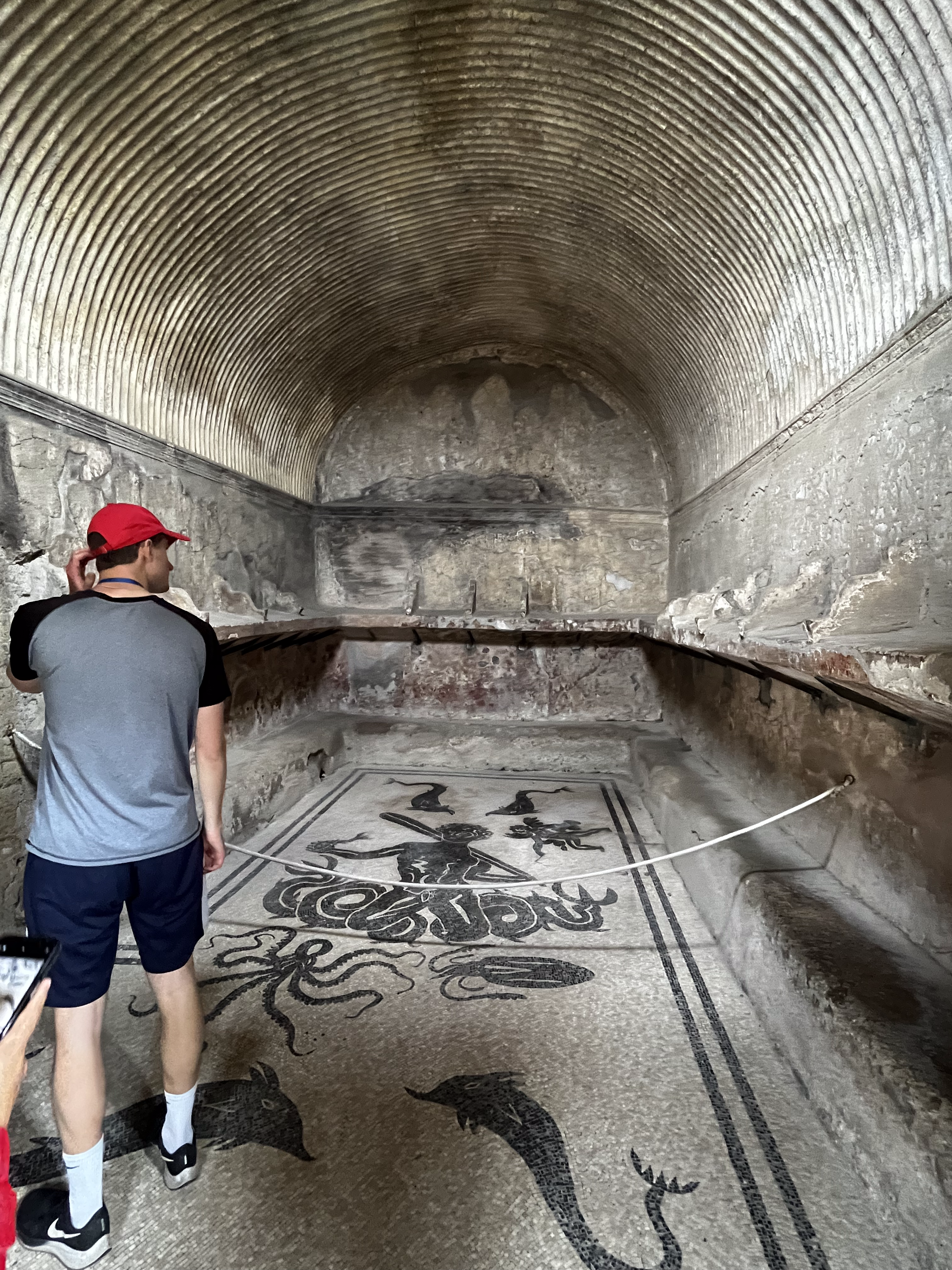Herculaneum
Herculaneum, located near Mount Vesuvius, was a prosperous ancient Roman town preserved by the eruption in 79 AD. Its well-preserved ruins offer insights into Roman daily life and culture, with magnificent frescoes and architecture showcasing its opulence. Exploring Herculaneum provides a captivating journey through time, revealing the grandeur and tragedy of this once-thriving city.






